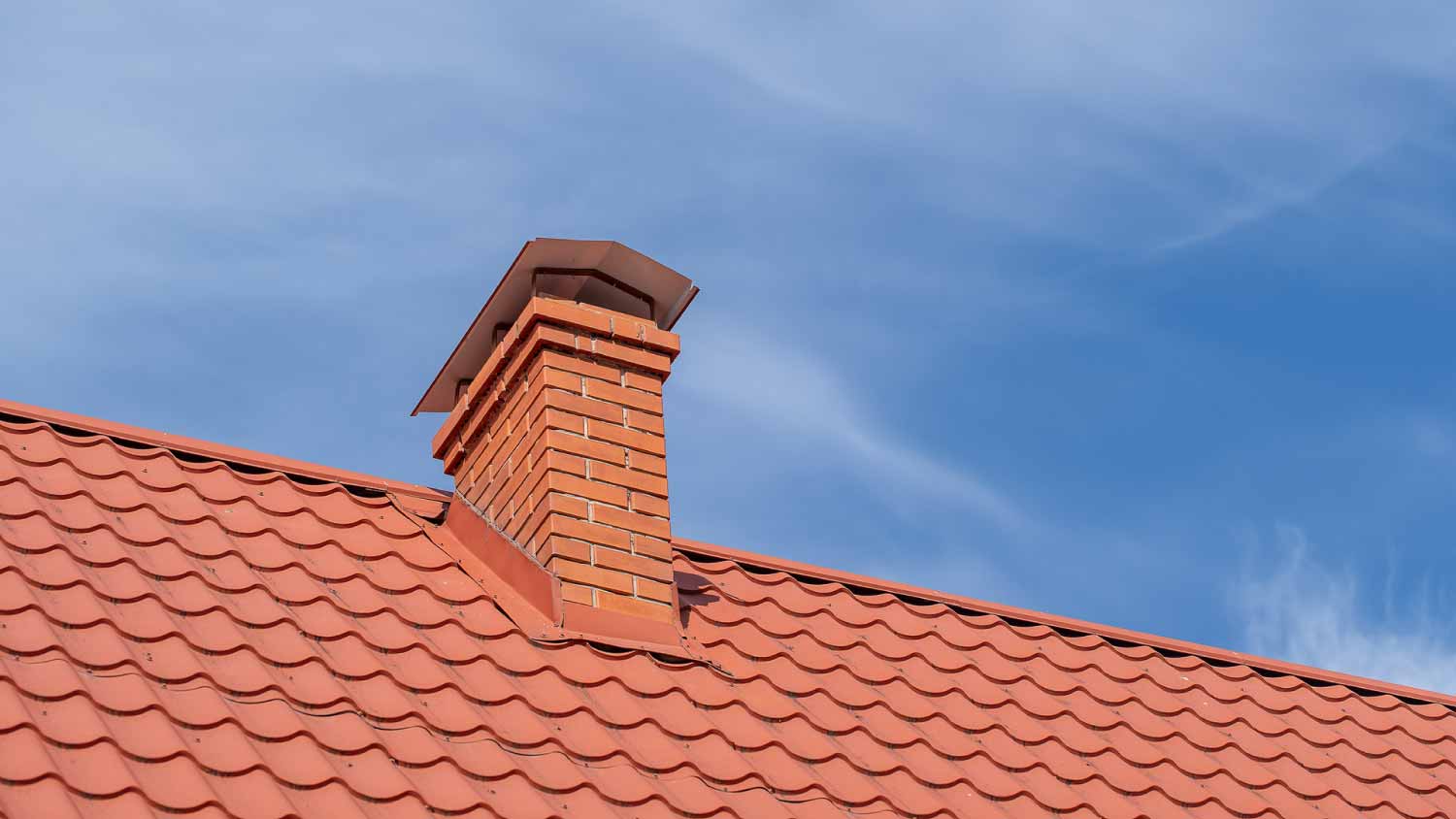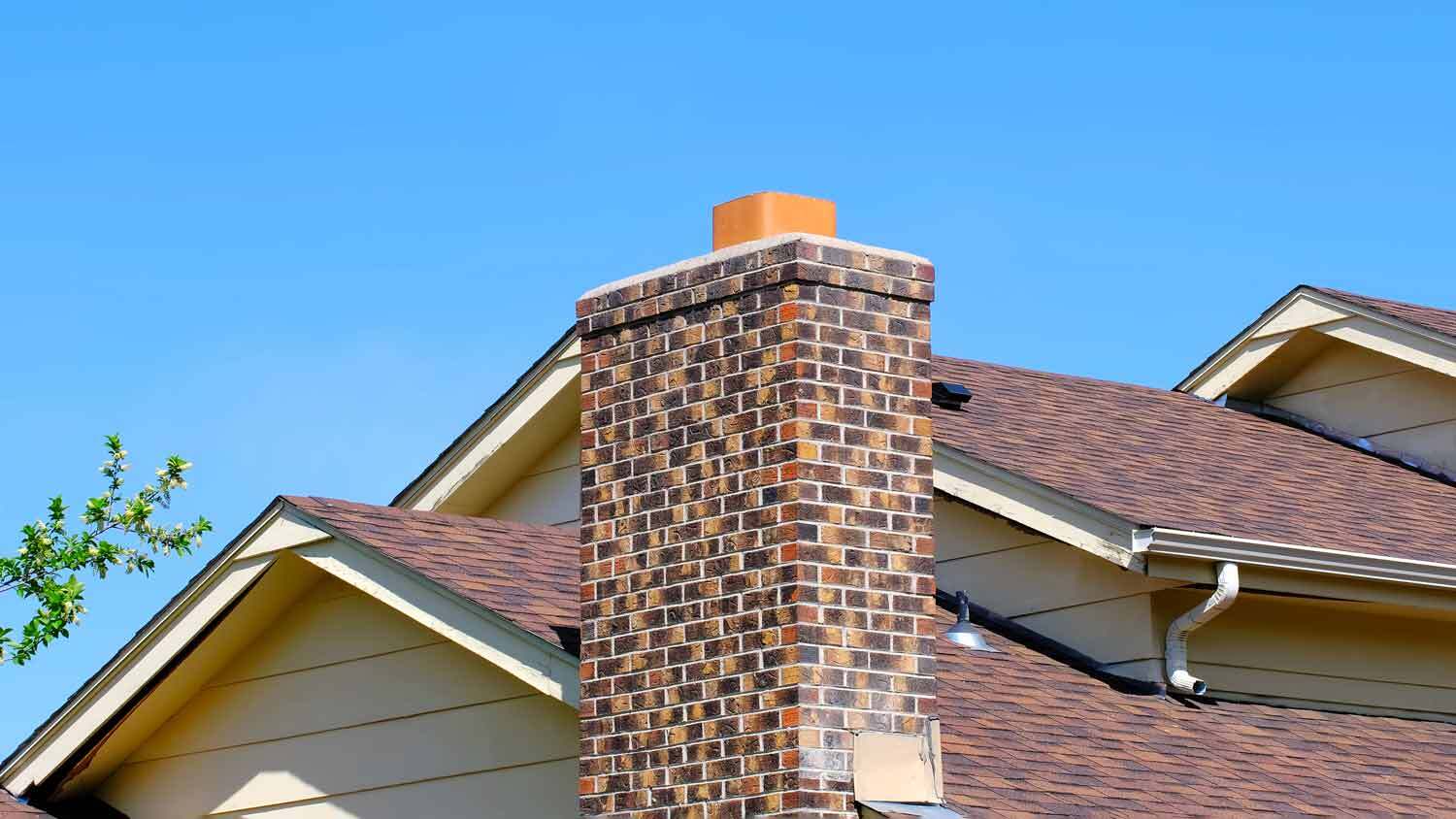
Notice leaks and corrosion around your chimney? You might need new flashing or some careful repairs. Here are some common chimney flashing repair costs.
No need to worry about downdrafts thanks to this ledge


A smoke shelf is an important part of a chimney that helps prevent strong downdrafts from blowing into your home.
A smoke shelf also prevents water and debris from entering your house.
You may be able to clean the smoke shelf yourself, but if it’s hard to reach or you can’t see it, it’s better to call a pro.
A chimney is made up of several parts that help it work safely and efficiently, keeping dangerous smoke from entering the house. The smoke shelf within your chimney may be simple enough: It’s essentially an outstretched ledge that is both a fire barrier at the throat of your chimney and a draft deterrent for wind entering your chimney. Let’s take a closer look at how this component works and how to maintain it.

A smoke shelf is a small ledge that slightly juts out within your chimney. The top portion of it either lays flat or curves toward the flue. It’s typically located behind your fireplace as a slightly angled wall and continues above the fireplace, with the actual shelf inside the smoke chamber. Typically, a smoke shelf is made of brick, though some chimneys may use ceramic tile or rubble.
A smoke shelf redirects cold air and catches water and debris. When you have the chimney damper open, cold air comes into the chimney and hits the smoke shelf. It’ll mix with the warm, smoke-filled air from your fireplace, and then help carry the smoke and warm air out of the chimney so that it doesn’t go back into your home.
It can also catch water if it’s raining or snowing or leaves or other debris if it’s windy outside. This prevents water or debris from unexpectedly hitting your fireplace.

If you don’t have a smoke shelf in your chimney, this can cause issues with drafts coming into your home and possibly bringing lots of smoke. The ledge part of the smoke shelf is installed directly behind your fireplace and typically works as both a thermal barrier and a way to direct the smoke through the chimney damper. Without it, you may have a draftier home, and smoke and toxins from the fire may blow inward if there’s a strong downdraft.
Your smoke shelf may be damaged if you notice your home is draftier than usual. This can be caused by a number of reasons within the smoke chamber itself, including cracks within the masonry, creosote buildup, or damage to the smoke shelf and liner.
Though a chimney inspection costs about $450 on average, it’s worth it to hire a chimney repair pro near you who can give you peace of mind and make the necessary repairs before any damage happens to your home.
From average costs to expert advice, get all the answers you need to get your job done.

Notice leaks and corrosion around your chimney? You might need new flashing or some careful repairs. Here are some common chimney flashing repair costs.

If you’re experiencing chimney airflow problems, a new damper may be in order. Use this guide to learn what goes into your chimney damper replacement cost.

Figuring out the cost for tuckpointing at your home is based on square footage. Most contractors will charge more for elevated surfaces above 8 feet.

What is tuckpointing a chimney? Tuckpointing a chimney involves replacing old, damaged mortar to preserve its structural integrity and enhance its appearance.

Learn how to remove a chimney damper safely and decide whether to DIY or hire a pro for the job. Get tips on what to consider before starting.

Your home’s chimney is made up of several parts. But when it comes to the difference between a chimney damper versus a flue, these parts work together.